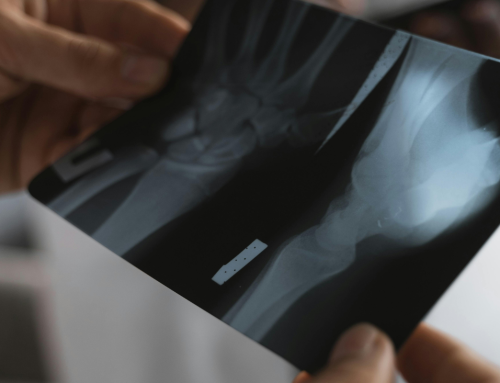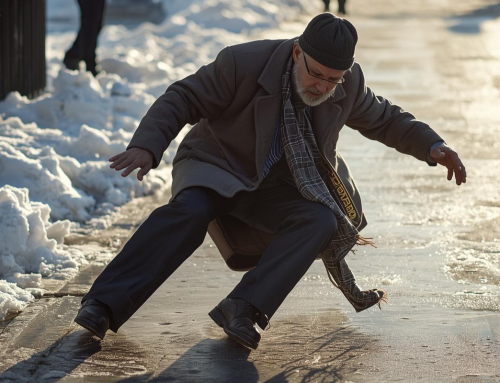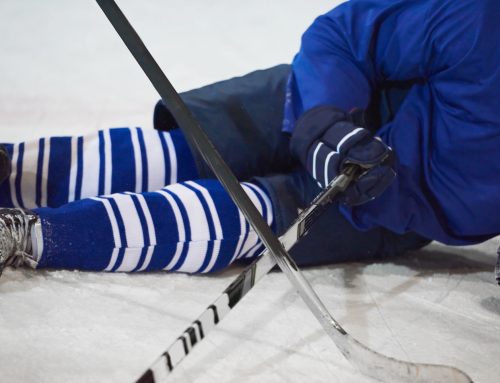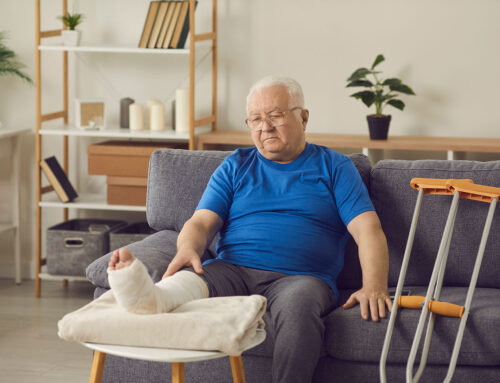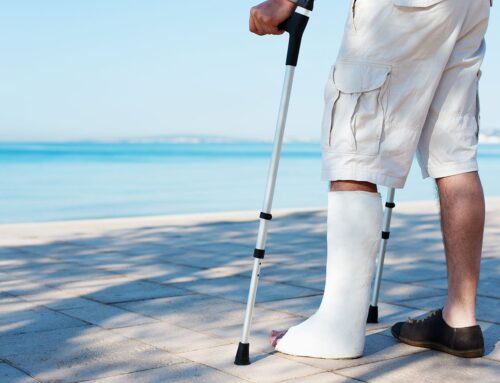When temperatures drop and ice blankets Canadian sidewalks, roads, and rinks, fracture rates soar. From slip-and-fall accidents to high-impact winter sports injuries, the cold months bring a surge in broken bones. Here’s what you need to know about winter’s most common fractures and how to speed your recovery.
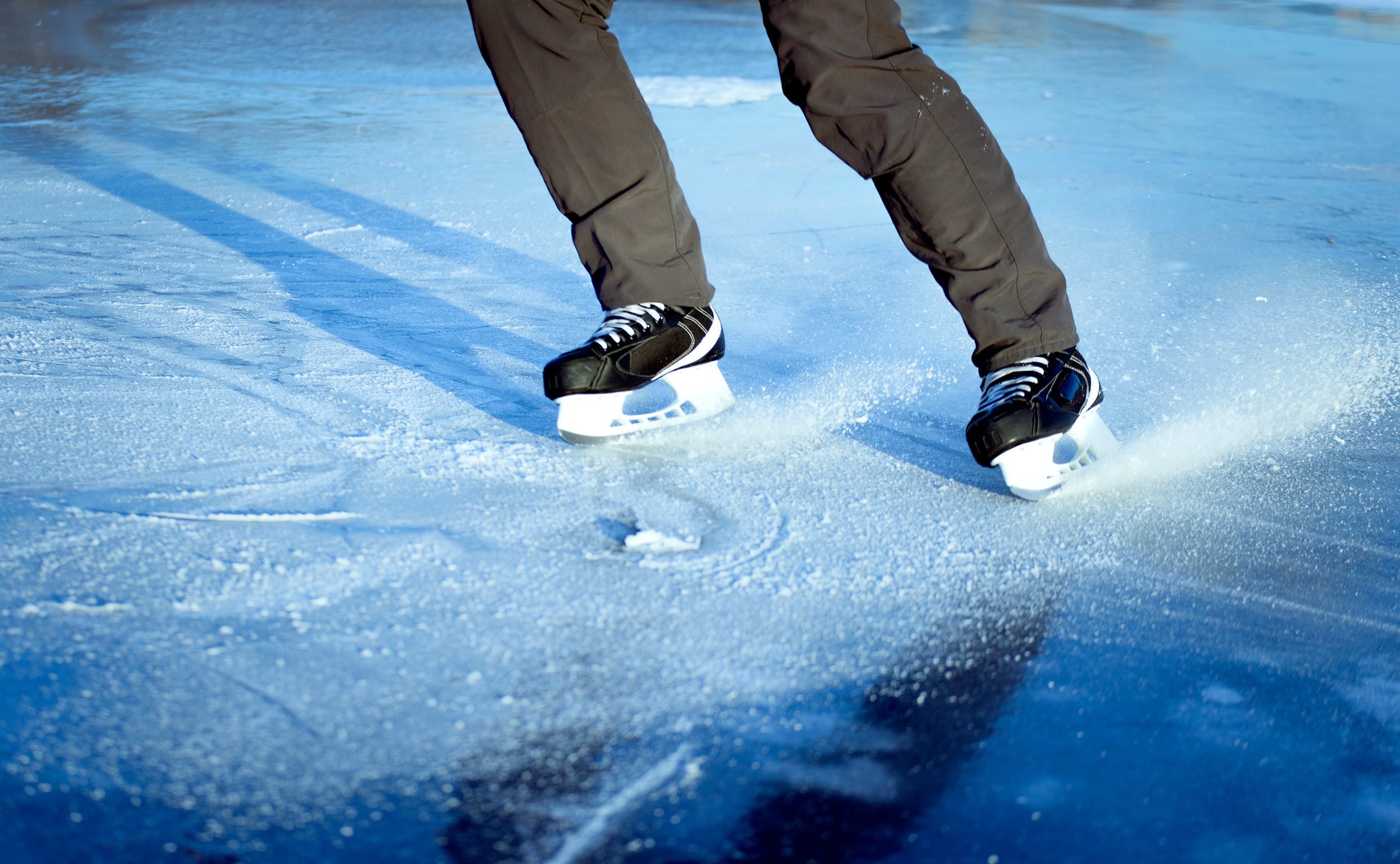
Quick Takeaways
- Winter increases fracture risk through icy conditions and winter sports.
- Most common fractures in winter: wrist, ankle, clavicle (collarbone), and hip.
- Hockey players face high rates of clavicle and wrist fractures.
- Snowboarders and skateboarders commonly suffer wrist and ankle breaks.
- LIPUS therapy can accelerate healing by up to 38% for fresh fractures.
Why Fractures Spike During Canadian Winters
Canadian winters create the perfect storm for bone fractures. Icy sidewalks, frozen parking lots, and snow-covered steps turn everyday activities into injury risks. Emergency rooms see a significant spike in fracture cases from November through March, with certain demographics at higher risk.
The main culprits:
- Icy surfaces: Black ice and slippery conditions cause falls that result in wrist, hip, and ankle fractures.
- Winter sports: Hockey, skiing, snowboarding, and skating lead to high-impact injuries.
- Reduced daylight: Shorter days mean more activities in darkness, increasing fall risk.
- Bundled clothing: Heavy winter gear can limit mobility and balance.
The Most Common Fractures in Winter
1. Wrist Fractures (Distal Radius)
Why they happen: When you slip on ice, your natural instinct is to catch yourself with your hands. This impact commonly breaks the radius bone near the wrist.
Who's at risk: All ages, but especially adults over 50 with reduced bone density and young snowboarders/skateboarders learning new tricks.
Typical healing time: 6-8 weeks with proper immobilization
LIPUS advantage: Studies show LIPUS therapy can reduce wrist fracture healing time by up to 38%, helping you regain hand function faster.
2. Ankle Fractures
Why they happen: Stepping off a curb onto ice, twisting during winter sports, or landing wrong while snowboarding can break one or more bones in the ankle joint.
Who's at risk: Active teens and adults, winter athletes, and anyone navigating icy terrain in inadequate footwear.
Typical healing time: 6-12 weeks depending on severity
Recovery tip: Ankle fractures often lead to prolonged immobility. Starting LIPUS therapy early helps maintain bone strength and can prevent the stiffness that delays full recovery.
3. Clavicle (Collarbone) Fractures
Why they happen: Direct impact from hockey checks, falls onto the shoulder while skating, or bike accidents on icy roads commonly break the collarbone.
Who's at risk: Hockey players of all ages, cyclists who continue riding in winter, and anyone who falls directly onto their shoulder.
Typical healing time: 6-12 weeks for adults; 3-6 weeks for children
LIPUS advantage: The clavicle is a common site for delayed healing. LIPUS therapy provides the mechanical signals needed to accelerate bone formation, particularly important for athletes wanting to return to play quickly.
4. Hip Fractures
Why they happen: Falls on icy surfaces, particularly for older adults with osteoporosis or reduced balance.
Who's at risk: Adults over 65 are at highest risk, but hip fractures can occur at any age from high-impact falls.
Typical healing time: 3-6 months, with surgical intervention often required
Critical insight: Hip fractures are serious injuries that require immediate medical attention. While LIPUS therapy can support healing, these injuries typically need surgical stabilization first.
Winter Sports & Fracture Risk
Hockey Injuries
Hockey combines speed, physical contact, and hard surfaces—a recipe for fractures. The most common fractures include:
- Clavicle breaks from body checks
- Wrist fractures from falls on ice
- Facial and jaw fractures (despite protective equipment)
For young athletes: Missing a season due to slow healing can be devastating. LIPUS therapy offers a safe, non-invasive way to support faster recovery so players can return to the ice sooner. See how Calgary Flames team physicians use LIPUS to get professional athletes back in the game.
Snowboarding & Skateboarding
These sports see high fracture rates among teens and young adults learning new skills:
- Wrist fractures: The most common fracture in snowboarding (from catching falls)
- Ankle fractures: From landing jumps incorrectly
- Tibia fractures: High-energy impacts during tricks gone wrong
The challenge: Young, active individuals often struggle with prolonged immobility. Faster healing means less time in a cast and a quicker return to the activities they love.
Learn more about common ski and snowboard injuries and how to prevent them.
Ice Skating
Whether it's recreational skating on outdoor rinks or figure skating lessons, falls on hard ice lead to:
- Wrist fractures: From falling backward and catching yourself
- Tailbone and hip fractures: Especially common in beginners and older adults
- Ankle fractures: From awkward landings or collisions
Who's at risk: Beginners learning to skate, children, and adults returning to skating after years away often underestimate how hard ice truly is.
How to Heal Winter Fractures Faster
1. Seek Immediate Medical Care
Don't wait to see if pain improves. Proper diagnosis and immobilization within the first 24-48 hours sets the foundation for successful healing.
2. Follow Immobilization Protocols Strictly
Winter activities are tempting, but violating weight-bearing restrictions can disrupt healing and add weeks to your recovery.
3. Optimize Nutrition for Bone Healing
Your body needs specific nutrients to rebuild bone:
- Protein: 1.5 g per kg of body weight
- Calcium: 1,200-1,500 mg daily
- Vitamin D: Especially important during dark Canadian winters (get tested and supplement if needed)
4. Consider LIPUS Therapy
Low-Intensity Pulsed Ultrasound (LIPUS) delivers precise mechanical signals that activate your bone-building cells. The Melmak LIPUS device:
✓ Accelerates healing by up to 38% for fresh fractures
✓ Works through casts and bandages
✓ Requires just 20 minutes daily at home
✓ Has zero known side effects
Who benefits most:
- Athletes needing rapid return to sport
- Active individuals who can't afford extended downtime
- Anyone experiencing slower-than-expected healing
- High-risk patients (smokers, diabetics, over 50)
Compare traditional fracture healing methods to LIPUS therapy.
Preventing Winter Fractures
While not all winter injuries are preventable, you can significantly reduce your risk:
For Everyone:
- Wear proper winter footwear with good traction
- Use handrails on stairs and walkways
- Salt walkways and clear snow promptly
- Take smaller steps and slow down on icy surfaces
- Improve balance and strength through exercise
For Winter Athletes:
- Wear appropriate protective gear (wrist guards for snowboarding, proper hockey equipment)
- Warm up properly before activity
- Know your limits and progress gradually
- Maintain bone health through nutrition and strength training year-round
Don't Let a Winter Fracture Sideline You All Season
Winter in Canada doesn't have to mean months of recovery from a fracture. With proper medical care, optimal nutrition, and advanced therapies like LIPUS, you can heal faster and get back to the activities you love—whether that's hockey, snowboarding, or simply walking safely through your neighbourhood.
The Melmak LIPUS device has helped thousands of Canadians recover faster from winter’s most common fractures. If you're tired of waiting and ready to take control of your healing timeline, we're here to help.

